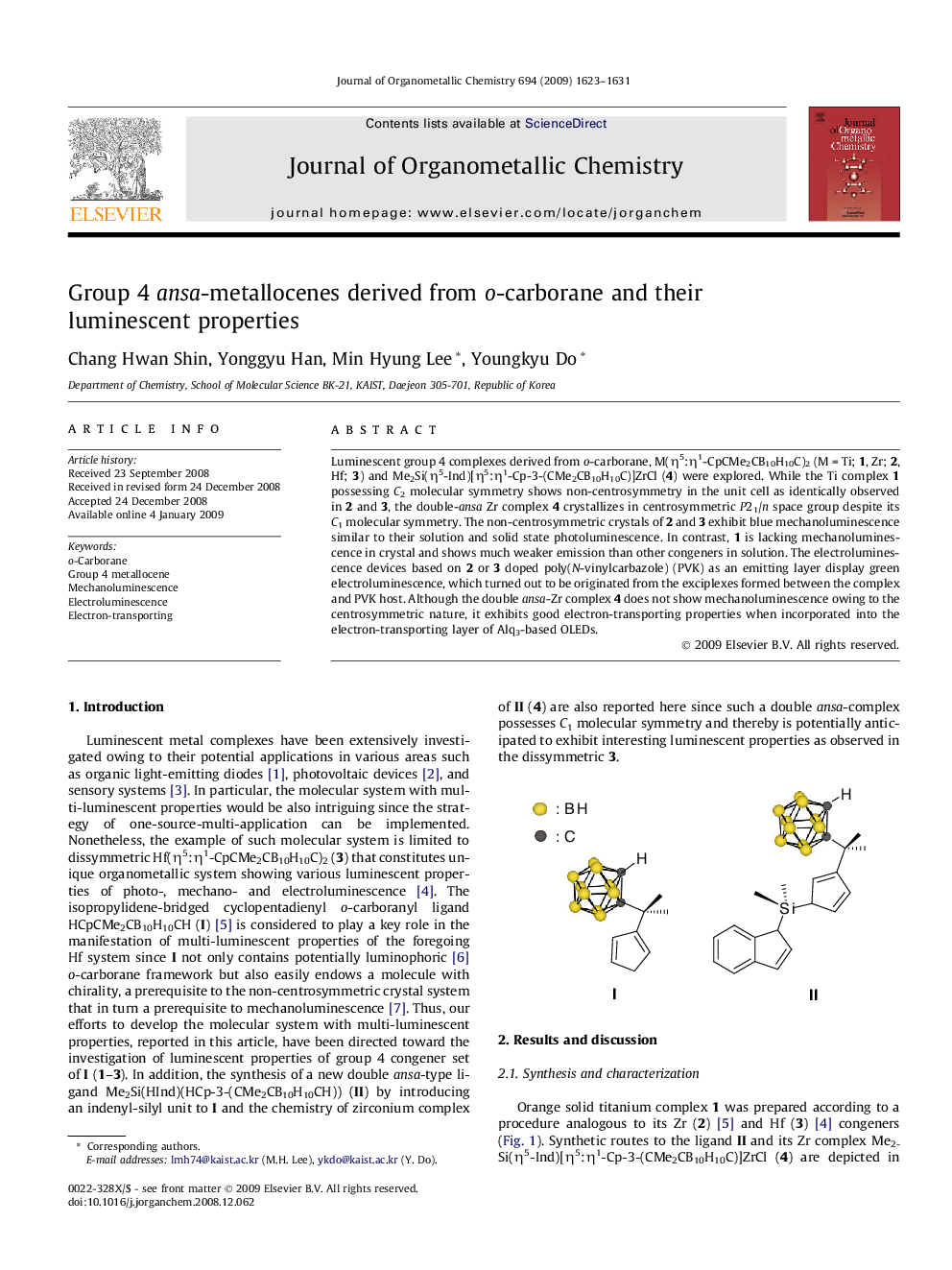| Article ID | Journal | Published Year | Pages | File Type |
|---|---|---|---|---|
| 1324564 | Journal of Organometallic Chemistry | 2009 | 9 Pages |
Luminescent group 4 complexes derived from o-carborane, M(η5:η1-CpCMe2CB10H10C)2 (M = Ti; 1, Zr; 2, Hf; 3) and Me2Si(η5-Ind)[η5:η1-Cp-3-(CMe2CB10H10C)]ZrCl (4) were explored. While the Ti complex 1 possessing C2 molecular symmetry shows non-centrosymmetry in the unit cell as identically observed in 2 and 3, the double-ansa Zr complex 4 crystallizes in centrosymmetric P21/n space group despite its C1 molecular symmetry. The non-centrosymmetric crystals of 2 and 3 exhibit blue mechanoluminescence similar to their solution and solid state photoluminescence. In contrast, 1 is lacking mechanoluminescence in crystal and shows much weaker emission than other congeners in solution. The electroluminescence devices based on 2 or 3 doped poly(N-vinylcarbazole) (PVK) as an emitting layer display green electroluminescence, which turned out to be originated from the exciplexes formed between the complex and PVK host. Although the double ansa-Zr complex 4 does not show mechanoluminescence owing to the centrosymmetric nature, it exhibits good electron-transporting properties when incorporated into the electron-transporting layer of Alq3-based OLEDs.
Graphical abstractLuminescent properties of group 4 complexes derived from o-carborane, M(η5:η1-CpCMe2CB10H10C)2 (M = Ti; 1, Zr; 2, Hf; 3) and Me2Si(η5-Ind)[η5:η1-Cp-3-(CMe2CB10H10C)]ZrCl (4) are described. Photo-, mechano- and electroluminescent properties of the non-centrosymmetric 1−3 and electron-transporting properties of the centrosymmetric 4 are discussed.Figure optionsDownload full-size imageDownload as PowerPoint slide
